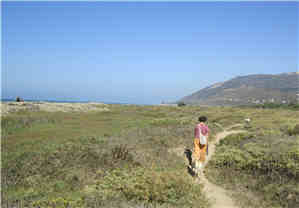Most of us sorely resent the time we waste each day behind the wheel of a car. But it's because cars are so convenient, that we forgive the fact they're also very costly, wasteful, slow, ugly, polluting and dangerous.
Those who are civic-minded enough, or unfortunate enough, to rely on public transportation create far less traffic and pollution than drivers, but they pay a heavy premium in the form of time devoted to travel.
How much additional value would an employer derive from a location with better transportation options, where they draw from a larger work force because employees can live in a larger radius, and where employees can get in and out faster and cheaper, leaving more time for getting things done.
How much are customers willing to pay for the convenience of easy access? How much more are they likely to use your services if they can get in and out easily? Fast food drive throughs and convenience stores prove it's a significant amount.
One of the latest new trends adding value to business and real estate is the development of new, automated ways to move people and goods around large campuses, housing developments, malls, stadiums, and anywhere where large numbers of people need to be moved from one place to another is Personal Rapid Transit or PRT, and in the past few years staggering energy prices, and crippling traffic have renewed interest in a dream that was dismissed years ago by transit industry old-timers.
Sometimes people confuse PRT with MagLev, because magnetic levitation propulsion is a common component in several PRT designs, but it's not required and many systems use only conventional electrified rails for propulsion.
Many people confuse PRT with “Monorails” but they're actually not even all that similar. Monorail is the brand name of a specific rail technology that uses a single track elevated rail system with heavy, high capacity, conductor-controlled trains, familiar to many because of it's association with Disney theme parks.
Personal Rapid Transit is something different. To fit the Advanced Transit Association (ATRA) definition, a PRT system must use small (generally, 1-6 person), automated vehicles, captive on a relatively small guideway with 24/7 on demand, direct origin to destination service available to all stations.
The idea is to use smaller vehicles dispatched based on user need, rather than forcing passengers to gather and ride together according to a schedule. Smaller vehicles means that the guideway is much less expensive to build, and maintain, can get you closer to your destination, and requires much less real estate for right-of-way. Plus, smaller vehicles are safer and more energy efficient, providing a much higher ratio of payload to total weight.
Rail is already one of the safest, most fuel efficient ways to move things. PRT combines the benefits of rail, plus automation. A natural match, some would call long over due, especially when you consider how expensive it's going to be to retrofit the nation's heavy freight with positive train control.
The centralized control system eliminates conflict between drivers, optimizing movement based on need, making the system fast, safe and efficient. It's also less expensive to run than the kind of transit that requires staffing.
While some people gasp with horror at the idea of trusting their lives to an automated control mechanism, most have ridden in and survived an automated roller coaster, and few riders realize that many subways, such as LA's popular Red Line are actually computer controlled; the attendants only control the doors, not the movement of the train.
Although there's not really any difficult technology required, until recently, there have been pitiful few examples of working PRT installations.
The legendary Morgantown PRT at West Virginia University has been in service since 1975, using a fully automated system carrying approximately 16000 riders a day with 98% availability and no injuries. Even with the huge initial cost overruns, the system has proven to be less expensive and more effective than the bus system it replaced. However, it's vehicles are too large and stations too few to fit the true vision of PRT.
Today several incarnations of PRT are in use with many more in development. There are now hundreds of PRT companies working on dozens of PRT technologies all over the world, but today none has emerged the leader in this new market.
The race has just begun, but it's heating up like the PC computer market of the early eighties, and there's simply no telling what will be the key that makes or breaks the market. What we do know is that with the soaring price of energy and the many hidden costs of cars and other transit alternatives, the market for movement of goods and people is huge and it's not going away anytime soon.




